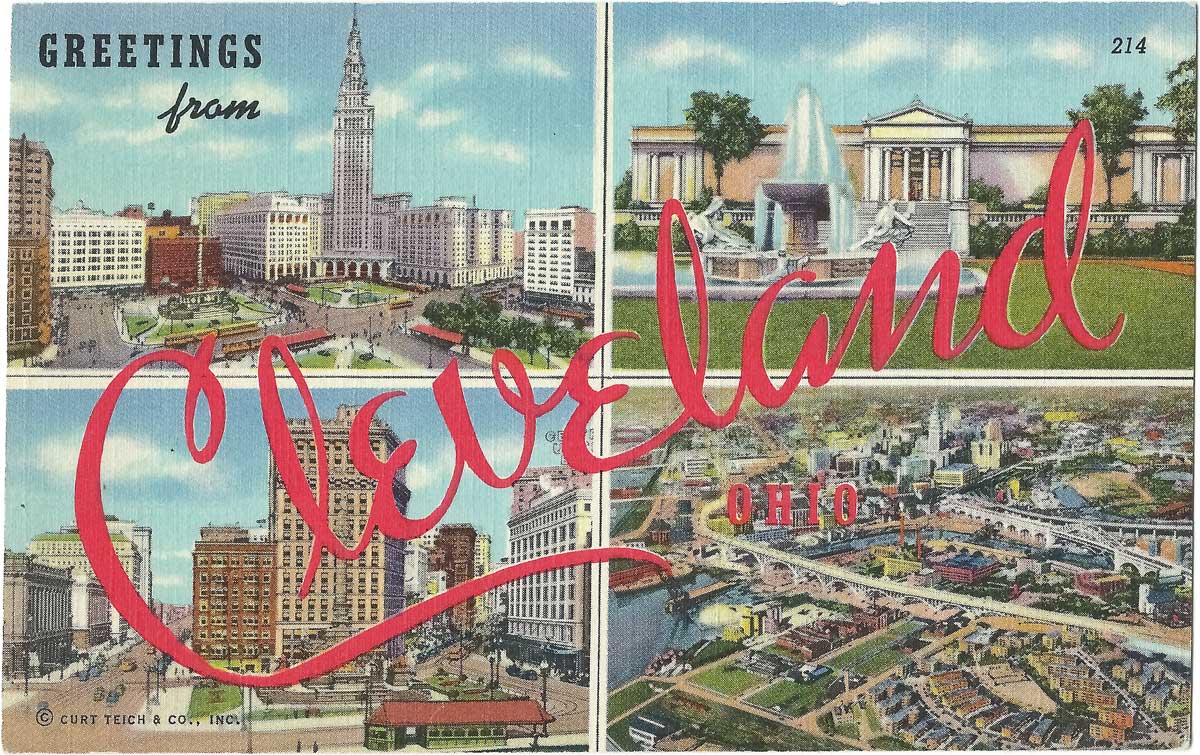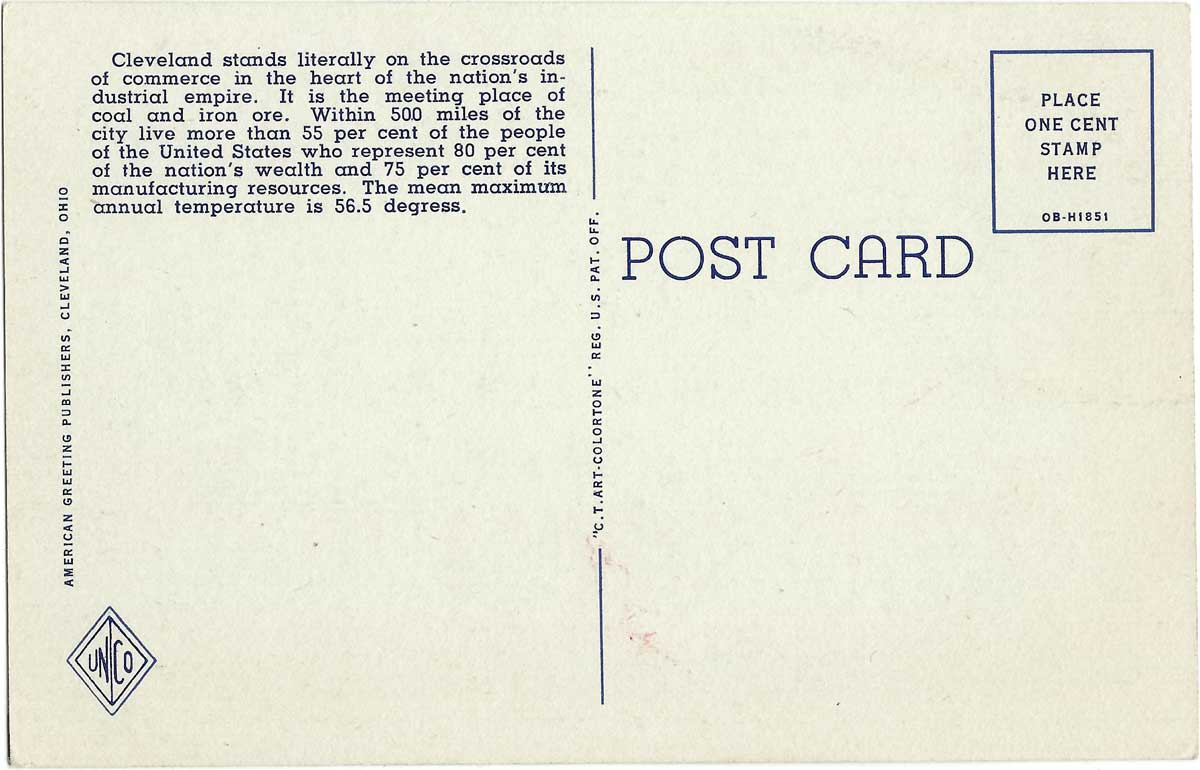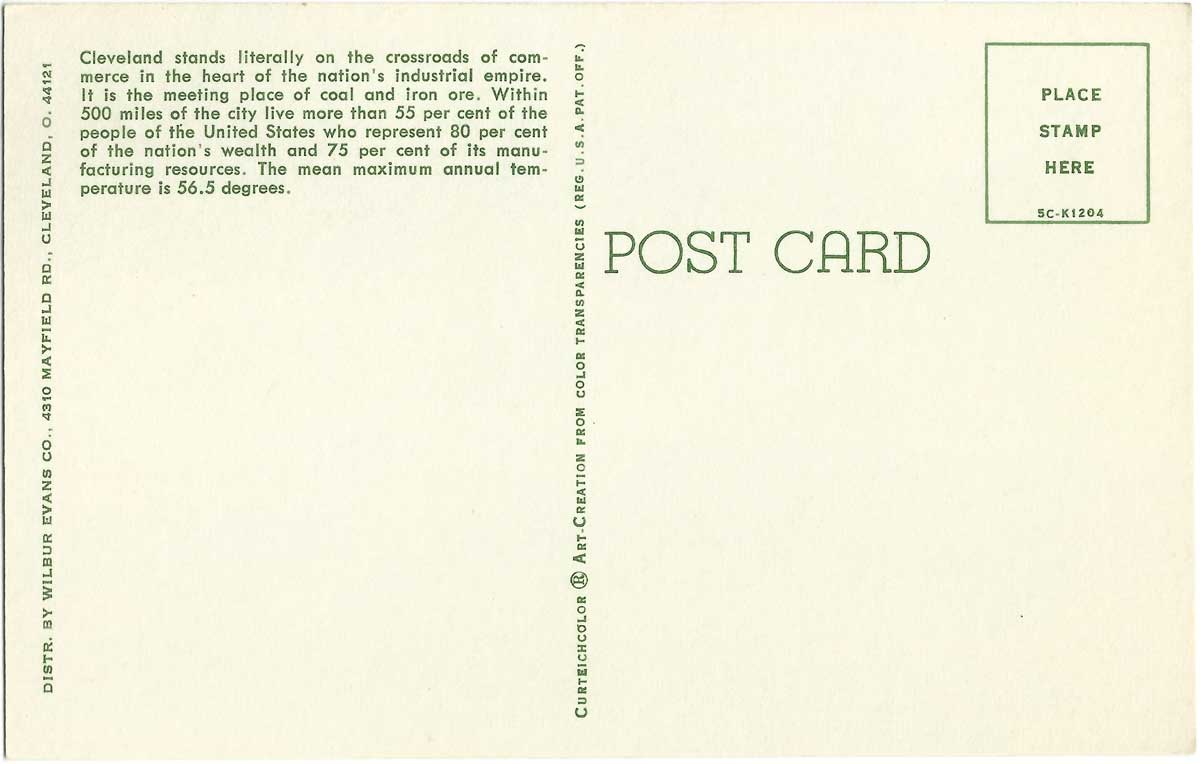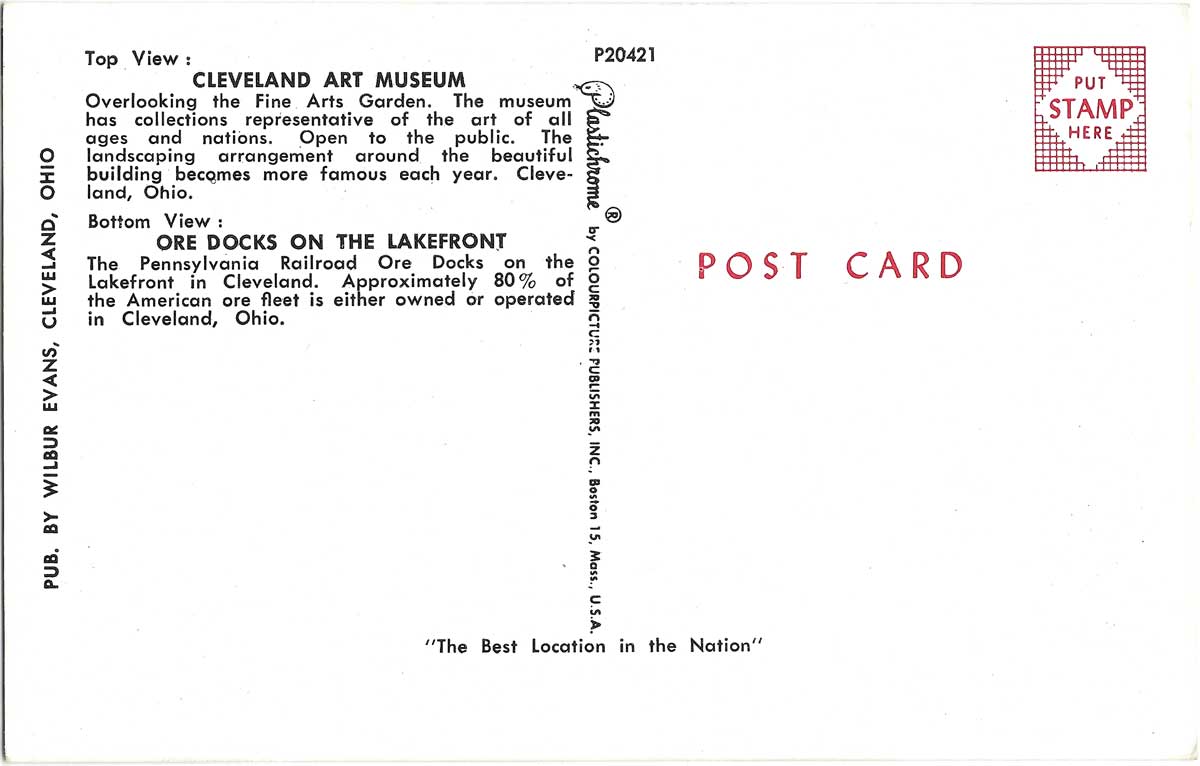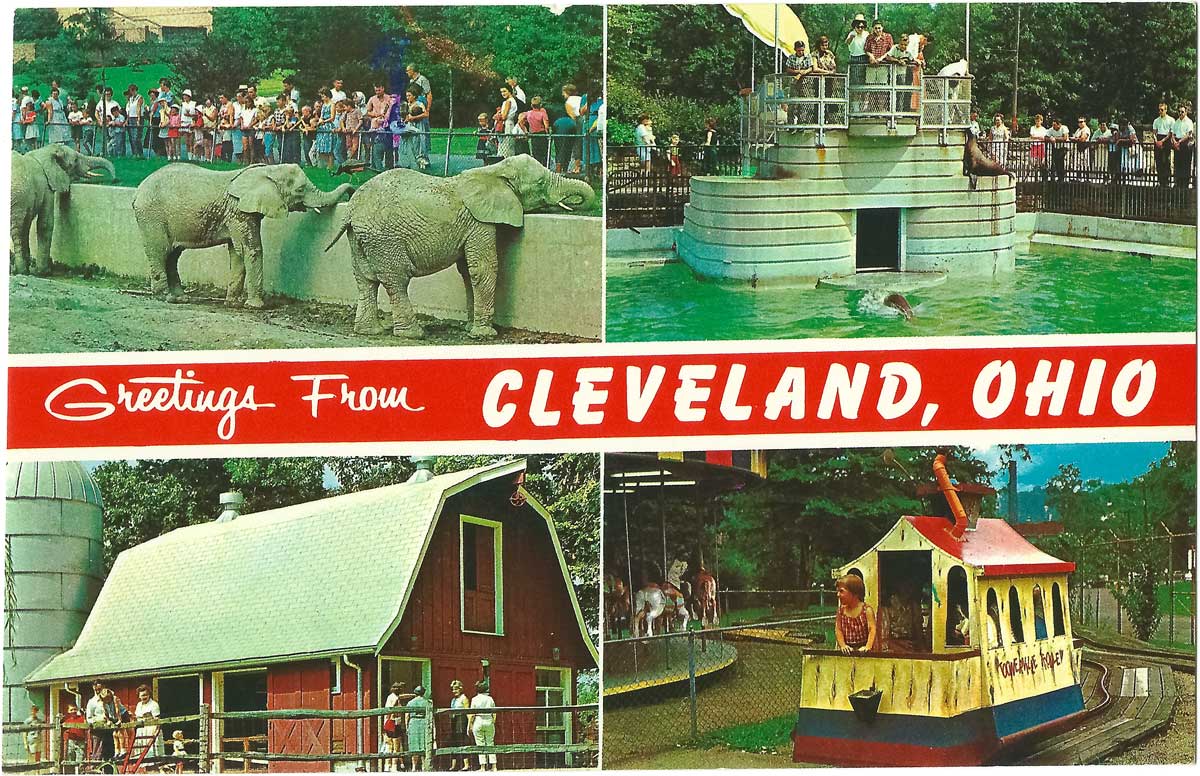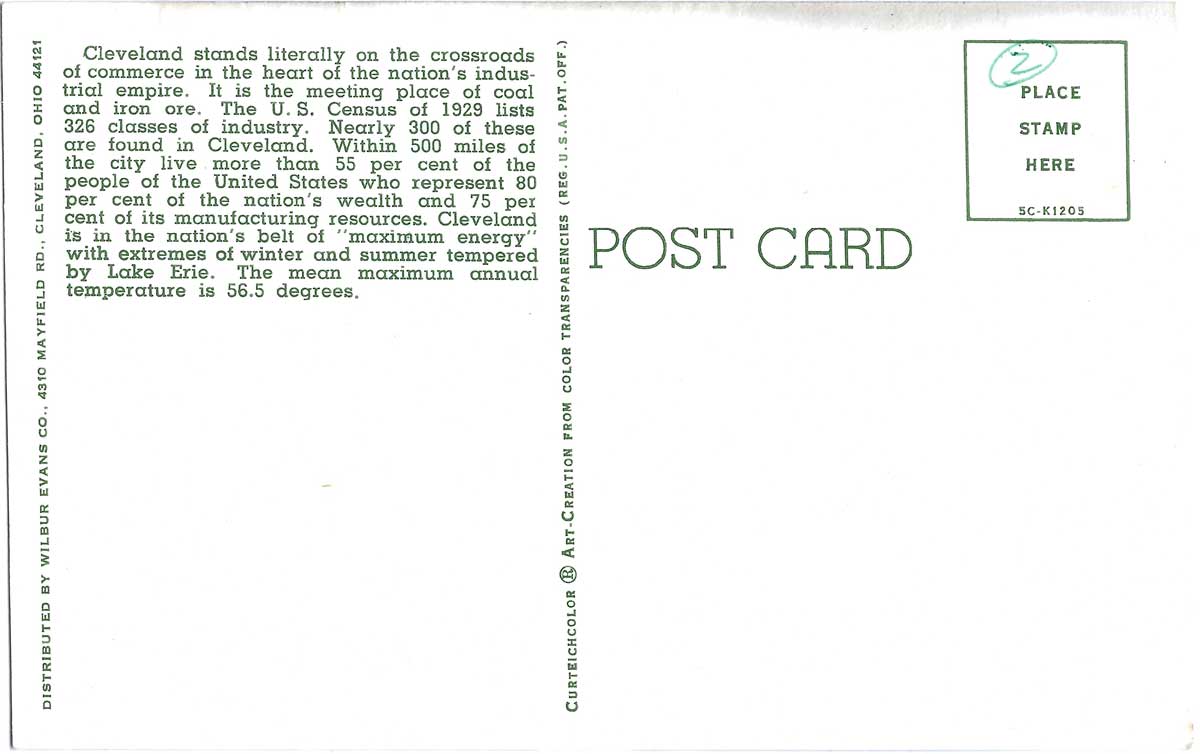
#PFTL: “Greetings from Cleveland, Ohio” Part 2: The Multi-Pic Era
As you read through this series, you'll likely notice that the postmarks and cards are predominantly from the early 1900's to post WW2. Much of that is because that was the heyday of postcard usage in the United States, the rest being: that's the style of cards we like in the Archive.
Today's cards stem from the latter part of postcards being treated more as a "photo souvenir", and date from the 1950's to mid 1980's. This era for postcards was more about collecting a high quality photo, generally with some factoids printed on the back about what was on the front, and treated as a cheap souvenir at a gift shop. In fact, many of the early postcards from the 20's-40's were repackaged as "Souvenir Books" where you pulled out a long, folded page with all of the cards connected / not usable as postcards, just enjoyed as artwork!
If you attempt to start collecting your own cards one day, these are the ones you'll find most likely to have a thumbtack hole or tape stain/tear mark on the back, because they'd just get stuck on someone's wall to illicit a memory. Did you grow up in a house with one of these stuck up on the wall or fridge? Even if not, enjoy some classic photos and facts from the multi-pic era.
 Greetings from Cleveland Ohio (ca 1950s)Postmark: (Unused)
Greetings from Cleveland Ohio (ca 1950s)Postmark: (Unused)Material: Linen
Card Front: The text "Greetings from Cleveland Ohio" where Cleveland is now a brush script red affair that takes up most of the card from the bottom left to the top right. An ID number of "214" is on the top right. The creative is made of 4 older postcard images: (top left) Terminal Tower & Public Square, (top right) the Cleveland Museum of Art, (bottom left) Society for Savings building, and (bottom right) an aerial view of downtown Cleveland.
Card Back: American Greeting Publishers, Cleveland, Ohio. Printed Copy:
Cleveland stands literally on the crossroads of commerce in the heart of the nation's industrial empire. It is the meeting place of coal and iron ore. Within 500 miles of the city live more than 55 per cent of the people of the United States who represent 80 per cent of the nation's wealth and 75 per cent of its manufacturing resources. The mean maximum annual temperature is 56.5 degrees.Note: There's a very long sentence in there that really hammers home how important Cleveland has been to the nation, for a very long time.
 Greetings from Cleveland Ohio (ca 1960s)Postmark: (Unused)
Greetings from Cleveland Ohio (ca 1960s)Postmark: (Unused)Card Front: "Greetings from Cleveland Ohio" with Cleveland still in the exact brush-script style as the last one, but with the Greetings from" now on the right side of the card, all in the same font. The creative is now 4 full-color photos (and will continue to be full-color photos for the rest of these) of: (top left) a ship passing under the Hope Memorial (?) bridge with Terminal Tower in the back, (top right) a distant shot of the Cleveland Museum of Art and Wade Lagoon, (bottom left) Municipal Stadium, and (bottom right) a photo of Terminal Tower from another angle.
Card Back: Dist by Wilbur Evans Co., 310 Mayfield Rd., Cleveland, O. 44121
Printed Copy:
Cleveland stands literally on the crossroads of commerce in the heart of the nation's industrial empire. It is the meeting place of coal and iron ore. Within 500 miles of the city live more than 55 per cent of the people of the United States who represent 80 per cent of the nation's wealth and 75 per cent of its manufacturing resources. The mean maximum annual temperature is 56.5 degrees.Note: You're not seeing double, and we didn't reprint the same copy from the above, this is indeed the same factoid on a different card from a different company. As postcard usage became less popular, some printers sold their designs to other printers, and the new printers re-used the information from the back with their own new imagery on the front.
 Greetings from Cleveland Ohio (ca mid-1960s)Postmark: (Unused)
Greetings from Cleveland Ohio (ca mid-1960s)Postmark: (Unused)Card Front: "Greetings from Cleveland Ohio: The Best Location in the Nation" separating 2 photos in a banner slightly angled across the middle of the card's width. Cleveland and Ohio now feature almost equally in bright red, extra bold block caps. The creative is only 2 photos this time, both of which are wonderfully detailed on the back, so we'll find out more there.
Card Back: Pub by Wilbur Evans, Cleveland, Ohio
Printed Copy:
Top View:
CLEVELAND ART MUSEUM Overlooking the Fine Arts Garden. The museum has collections representative of the art of all ages and nations. Open to the public. The landscaping arrangement around the beautiful building becomes more famous each year. Cleveland, Ohio.Bottom View:
ORE DOCKS ON THE LAKEFRONT The Pennsylvania Railroad Ore Docks on the Lakefront of Cleveland. Approximately 80% of the American ore fleet is either owned or operated in Cleveland, Ohio.
 Greetings from Cleveland Ohio (ca mid-1970s)Postmark: (Unused)
Greetings from Cleveland Ohio (ca mid-1970s)Postmark: (Unused)Card Front: 4 photos with a red banner separating 2 photos to the top and 2 to the bottom with "Greetings from Cleveland Ohio" in white text straight across the width. Cleveland and Ohio now feature equally in white brush caps. Once again, the publisher was nice enough to detail the photos &emdash; along with additional info &emdash; on the back, so let's take a look.
Card Back: Pub by Wilbur Evans - Cleveland - Ohio
Printed Copy:
Note: The Cleveland Metroparks Zoo still exists to this day, but the admission price for a person over the age of 12 now ranges from $17.50-$21.50 (as of this publishing), and the hours are almost the same, but there are far more things to do there these days. Be sure to check with their website before making plans to attend!CLEVELAND ZOO On West 25th Street at Brookside Park. Very interesting and representative collection of animals and land and water birds. Admission 50c per person over 12 years of age. Tuesdays free. Hours 10 A.M. to 5 P.M. Summer holidays and Sundays 10 A.M. to 7 P.M.
Peanuts and pop-corn are always on the menu for Elephants.
Spectators, young and not so young, feed the Sea Lions
The always delightful and interesting Children's Farm at Cleveland Zoo.
The Quaint little Toonerville Trolley about to wobble along its course, at CLEVELAND ZOO.
 Greetings from Cleveland Ohio (ca mid-1980s)Postmark: (Unused)
Greetings from Cleveland Ohio (ca mid-1980s)Postmark: (Unused)Card Front: 2 photos with a white banner separating them; the card is portrait-oriented with the 2 photos displayed as landscape, and the banner between. The banner text reads "Greetings from Cleveland Ohio: World Port" in black and red text. Cleveland again features slightly more prominently than Ohio and are in serif caps, while "World Port" is in sans-serif, and slightly smaller. The back of this has gone back to a factoid-heavy blurb, but the photos are (top) Terminal Tower & Public Square and (bottom) Municipal Stadium.
Card Back: Distributed by Wilbur Evans Co., 4310 Mayfield Rd., Cleveland, Ohio, 44121
Printed Copy:
Cleveland stands literally on the crossroads of commerce in the heart of the nation's industrial empire. It is the meeting place of coal and iron ore. The U.S. Census of 1929 lists 326 classes of industry. Nearly 300 of these are found in Cleveland. Within 500 miles of the city live more than 55 per cent of the people of the United States who represent 80 per cent of the nation's wealth and 75 per cent of its manufacturing resources. Cleveland is in the nation's belt of "maximum energy" with extremes of winter and summer tempered by Lake Erie. The mean maximum annual temperature is 56.5 degrees.Note: This is definitely the publisher taking as many facts as they could from previous cards, and repackaging all of it for later versions of the creative &emdash; taking almost half the correspondence area with info!
That closes out our list for this week, and, as always, we hope you enjoyed some historic views from Cleveland. Come back next issue for "Greetings from Cleveland, Part 3: The Variants", some using the "Greetings from Cleveland" concept as early as the 1900's, and some taking a little more liberty with the concept!

